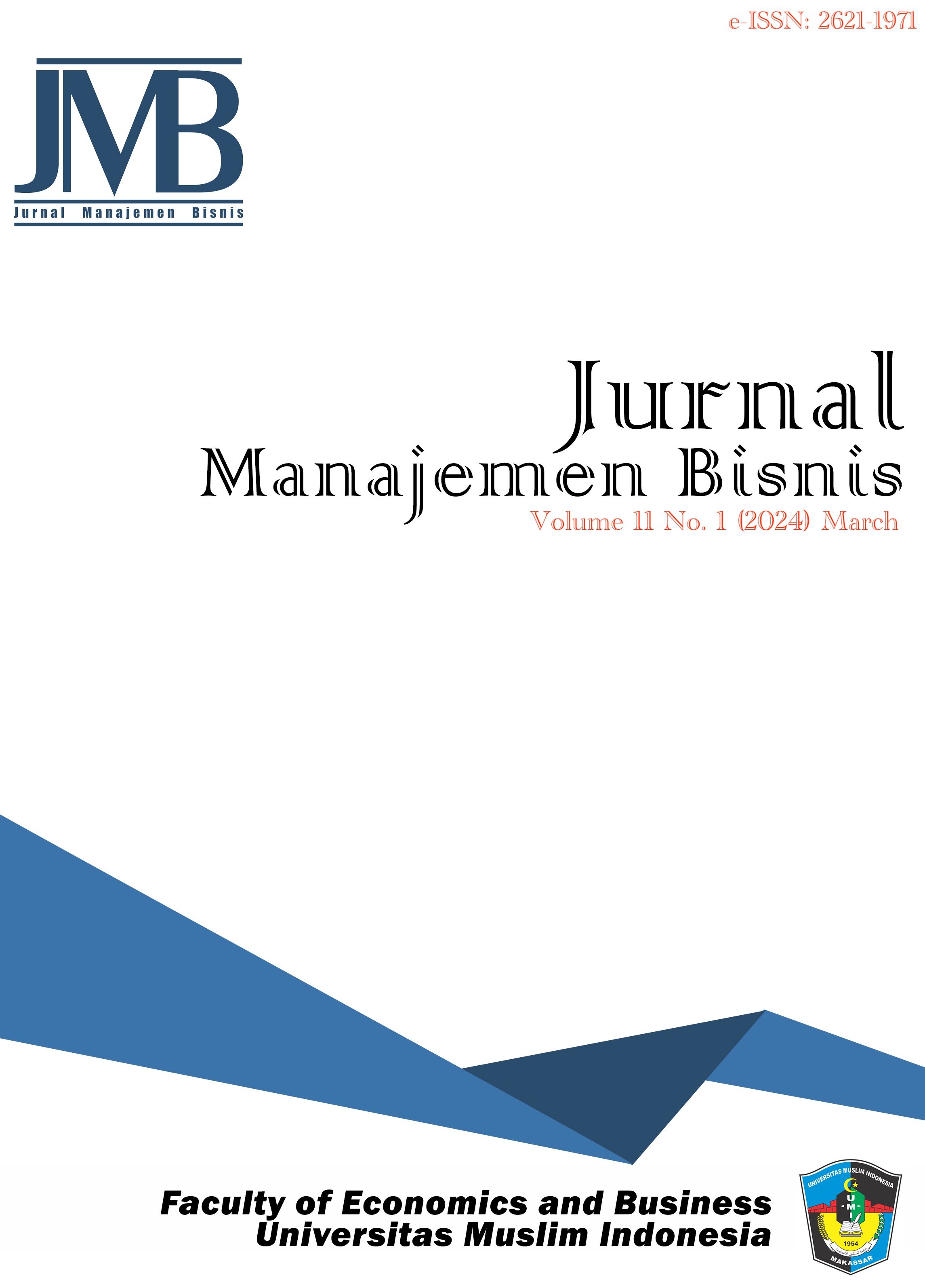The Influence of Intrinsic and Extrinsic Rewards on Employee Performance
PT Bumi Lancang Kuning Pusaka Pekanbaru Case Study
DOI:
https://doi.org/10.33096/jmb.v11i2.956Keywords:
Employee performance, Extrinsic rewards, Intrinsic rewardsAbstract
In today's competitive business environment, ensuring optimal employee performance is critical for organizational success. Rewards, both intrinsic and extrinsic, play a vital role in motivating employees to perform at their best. The purpose of this study is to examine the influence of intrinsic and extrinsic rewards on employee performance. The research method used is quantitative, designed to explore specific aspects of the population and sample selected for the study. The population at PT. Bumi Lancang Kuning Pusaka consists of 119 individuals. In this study, the sample was determined using purposive sampling, resulting in 46 employees from the operational division at PT. Bumi Lancang Kuning Pusaka Pekanbaru being selected as respondents. Data analysis was conducted using Structural Equation Modeling based on Partial Least Squares (SEM-PLS) software. The findings of this study reveal that both intrinsic and extrinsic rewards partially influence employee performance. Moreover, intrinsic and extrinsic rewards simultaneously have a significant impact on employee performance.
Downloads
References
Abdillah, W., Hartono, J., & U. B. (2019). Concepts and applications of structural equation modeling (SEM) based on variants in business research (2nd ed.). Yogyakarta: Unit Publisher and Printer STIM YKPN.
Azwar, S. (2017). Reliability and validity. Jakarta: Pustaka Pelajar Publisher.
Bambang Prasetyo, & Miftahul Jannah, L. (2016). Quantitative research methods: Theory and application. Jakarta: PT RajaGrafindo Persada.
Fareed, Z., Zuban, U. A. F. S., & Raheel, N. L. (2013). The impact of rewards on employee’s job performance and job satisfaction. Academy of Business & Scientific Research, 1(1).
Ferdinand, A. (2014). Management research methods. Semarang: BP Universitas Diponegoro.
Ghozali, I. (2018). Multivariate analysis with SPSS program. Semarang: Universitas Diponegoro.
Ghozali, I., & L. H. (2012). Partial least square: Concepts, techniques, and applications of SmartPLS 2.0 M3. Semarang: Universitas Diponegoro Publishing.
Gudono. (2017). Multivariate data analysis. Yogyakarta: BPFE.
Hasibuan, M. S. P. (2017). Human resource management.
Heidjrachman, R., & H. S. (2017). Personnel management. Yogyakarta: BPFE.
Ivancevich, M. J., Konopaske, R., & Matteson, T. M. (2013). Organizational behavior and management. Jakarta: Erlangga.
Kawiana, I. G. P. (2020). Human resource management, MSDM companies. Bali: UNHI Press Publishing.
Khaeruman. (2021). Improving human resource management performance, concepts, and case studies. Banten: CV AA Rizky.
Lubis, A. I. (2020). Behavioral accounting. Jakarta: Salemba Empat.
Nitisemito, A. S. (2020). Personnel management. Jakarta: Balai Aksara.
Nnaji-Ihedinmah, C., Nnadozie, E., & F. C. (2015). Effect of rewards on employee performance in organizations: A study of selected commercial banks in Awka Metropolis.
Rambet, A. (2022). Leadership, styles to improve motivation and employee performance. Jakarta: Graha Ilmu.
Rivai, V., et al. (2011). Corporate performance management from theory to practice. Bogor: Ghalia Indonesia.
Sugiyono. (2018). Quantitative, qualitative, combined, and R&D research methods. Bandung: CV Alfabeta.
Torang, & Syamsir, D. (2014). Organization and management. Bandung: CV Alfabeta.
Tsaury Sofyan. (2013). Human resource management. Jember: Stain Jember Press.
Vivi, L., Suryanto, L. R., & Putra, S. L. R. (2022). The effect of extrinsic and intrinsic rewards on employee performance in public services during COVID-19 (A study on the Department of Population and Civil Registration in Malang City). Journal of Public Response, 16(8), 1–18.
Wibowo. (2016). Performance management (5th ed.). Jakarta: PT RajaGrafindo Persada.
Downloads
Published
Issue
Section
License
Copyright (c) 2024 JMB UMI

This work is licensed under a Creative Commons Attribution 4.0 International License.






